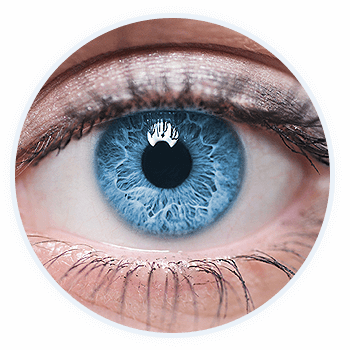
Do you spend a lot of time in front of your computer, phone, or TV? While digital devices are incredibly useful – and often unavoidable – they can also take a toll on your eyes. Keep reading to learn how extended screen time may affect your vision and what you can do to protect your eyes.
What’s the Impact of Prolonged Screen Time on Your Eyes?
When you stare at your computer, phone, or tablet for long periods, your eyes work overtime to focus. At the same time, you blink far less than usual. This combination can lead to a condition known as digital eye strain (also called computer vision syndrome).
Digital screens also emit blue light, which can contribute to eye strain and disrupt your sleep cycle, especially when used at night. While there’s currently no solid evidence that blue light from screens causes permanent eye damage, minimizing exposure can still help with overall eye comfort and health.
What are the Symptoms of Digital Eye Strain?
Digital eye strain can cause many bothersome symptoms that may worsen if the problem isn’t addressed. These include:
Blurred Vision
Staring at screens for too long can cause your vision to become temporarily blurry. You may find it harder to focus on text or images, especially after extended use.
Eye Fatigue
Overusing your eye muscles – just like any other muscles – can lead to tired, achy eyes. This discomfort can worsen the longer you stay glued to a screen.
Dry eyes
On average, you blink about 17 times per minute. Every blink coats your eyes with fresh tears, keeping them moist, lubricated, and comfortable. However, your blink rate decreases by over 50 percent when you focus on screens for long periods. Reduced blinking makes tears evaporate faster, which can lead to dry eyes.
Another reason too much screen time can cause dry eye is incomplete blinking. Incomplete blinking happens when your bottom and top eyelids don’t fully touch during a blink, exposing parts of the eye’s surface.
This can leave the exposed parts dry, uncomfortable, and irritated.
Headaches
Strained eye muscles due to prolonged screen time can trigger headaches. The headaches may be felt as a dull, throbbing, constant, or sharp pain that can make it difficult to perform everyday tasks.
Neck, Shoulder, and Back Pain
While not an eye issue, poor posture during screen time can lead to aches and pains in your upper body. Tilting your head, leaning forward, or hunching over devices can strain your muscles and make discomfort worse.
What Can You Do About It?
These simple habits can protect your eyes from the effects of too much screen time:
Practice the 20-20-20 Rule
Every 20 minutes, look at something 20 feet away for at least 20 seconds. This gives your eye muscles a break and helps reduce strain.
Doing this helps your eyes relax and decreases fatigue. You can set a timed reminder to ensure you take these breaks as per the rule.
Blink More Often
Make a conscious effort to blink regularly and completely. Each blink refreshes your eyes with a new layer of tears, keeping them comfortable and lubricated.
Consider Computer Glasses
Computer glasses are designed to reduce glare, provide optimal lens power for screen use, and may filter some blue light. They can help ease eye strain and make screen time more comfortable.
Screen Time Relief Is Within Reach
Digital eye strain can impact your vision, focus, and day-to-day comfort, but it’s manageable with the right care and habits. If you’re experiencing signs of digital eye strain, our expert eye doctors are here to help.
We’ll take the time to understand your symptoms, check your vision, and create a personalized plan to protect your eyes from screen-related discomfort.
Feeling the strain? Schedule your appointment at VisionPoint Eye Center and take the first step toward more comfortable screen time.










